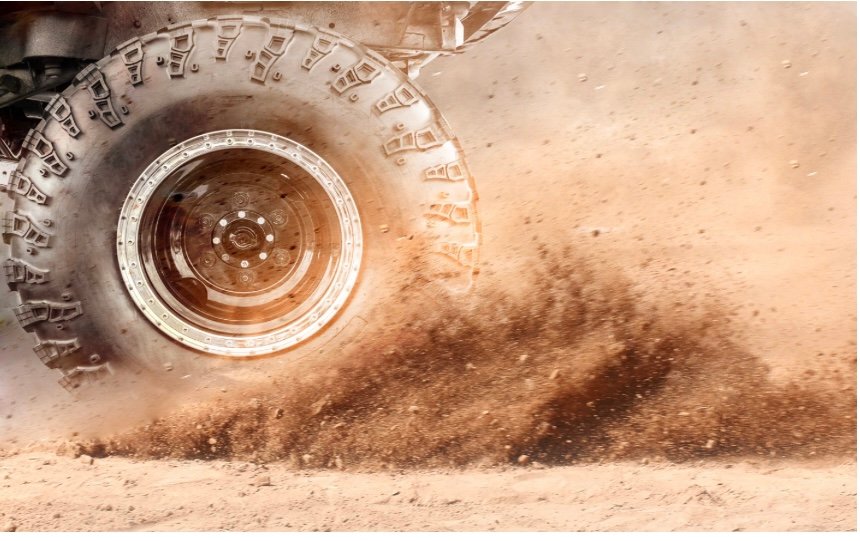Best 4×4 Tires for Off-Road Adventures: How to Choose the Right One
Off-road adventures push your vehicle to its limits, and nothing plays a bigger role in performance than your tires. The right 4×4 tires can help you tackle mud, sand, rocks, and snow with ease, while the wrong ones can leave you stuck, spinning, or worse damaged.
But how do you choose the best off-road tires when there are so many options? This guide will break it down in simple terms so you can confidently pick the right set for your next adventure.
Understanding 4×4 Tire Types
Not all off-road tires are built the same. Different terrains require different features, and knowing these distinctions will help you avoid costly mistakes.
1. All-Terrain A/T Tires
A/T tires are the most versatile option, making them great for those who switch between on-road and off-road driving. While they offer decent traction on uneven surfaces, they may not perform as well in extreme conditions like deep mud or heavy snow.
2. Mud-Terrain M/T Tires
Designed for mud lovers, these tires excel at pulling your vehicle through thick, sticky terrain. However, they tend to be noisier on pavement and may wear down faster on hard surfaces.
3. Rock Terrain Tires
If your adventures take you over jagged rocks, steep hills, or technical terrain, rock-terrain tires are your best friend. While excellent for gripping uneven surfaces, they’re usually stiff and rough on smoother roads.
4. Sand Tires Paddle Tires
For sandy trails, traditional off-road tires can struggle to maintain traction. Paddle tires (or specially designed sand tires) keep you moving without getting bogged down. However, they’re not practical for daily driving.
5. Snow/Winter Tires
If your 4×4 sees snowy mountain passes, regular off-road tires might not cut it. Snow tires give you better control on slippery roads but wear out quickly in warm weather.
Choosing the Right 4×4 Tires for Your Adventure
Your perfect tire choice depends on the terrain you tackle most often. Here’s how to match the right set to your needs.
1. Best Tires for Mud Trails
Muddy terrain can be one of the most challenging environments. Without the right tread design, you’ll find yourself spinning in place.
Top pick: Mud Terrain M/T Tires
If your trips often include swamps, riverbeds, or deep muddy trails, M/T tires will provide the grip needed to power through.
2. Best Tires for Rocky Trails
Rocky landscapes require a mix of durability and flexibility. Your tires need to absorb shocks while maintaining traction on uneven surfaces.
Top pick: Rock-Terrain Tires or reinforced A/T Tires
If rock crawling is your thing, reinforced rock-terrain performance tires will give you confidence on steep slopes and boulder-strewn paths.
3. Best Tires for Sand Dunes
Driving on sand requires a completely different approach than other terrains. Instead of digging in, your tires should glide smoothly over the surface.
Top pick: Sand Tires or wide A/T Tires with reduced PSI
If you love beach driving or desert trails, investing in sand-specific tires will prevent unnecessary struggles in soft terrain.
4. Best Tires for Snowy Conditions
Winter driving is a whole different beast—ice and snow demand tires that can grip frozen surfaces effectively.
Top pick: Winter Tires or A/T Tires with Snow Ratings
If you live in a cold climate, winter-rated tires can prevent slipping and sliding when temperatures drop.
Other Important Factors to Consider
1. Tire Size Matters
Larger tires increase ground clearance, but they can also affect fuel efficiency and strain your vehicle’s suspension. Stick with sizes that complement your driving style.
2. Load Rating & Durability
If you carry heavy gear or tow trailers, ensure your tires have a higher load rating to handle the extra weight.
3. On Road vs. Off-Road Comfort
While aggressive off-road tires offer excellent grip, they can be noisy and rough on highways. If you drive on pavement frequently, a hybrid all-terrain option might be more practical.
4. Budget vs. Performance
Higher-quality off-road tires come with a steeper price tag, but they last longer and perform better in extreme conditions. Investing in the right set now can save you from frequent replacements.
Final Thoughts: Which Tires Should You Choose?
Your off-roading style and terrain preferences should guide your choice. Here’s a quick summary:
No matter where you drive, choosing the right 4×4 tires will keep you safe, enhance performance, and ensure you never get left behind on your adventures.
FAQs
1. Can mud terrain tires be used on the highway?
Yes, but they’re louder and less fuel-efficient than all-terrain tires.
2. How do I prevent my 4×4 tires from wearing out too fast?
Regular rotation, alignment checks, and proper inflation will extend their lifespan.
3. Do all terrain tires work in deep snow?
Some do, but dedicated winter tires are the best option for heavy snowfall.
4. What’s the ideal PSI for off road driving?
Lowering it to 15 20 PSI helps improve traction on sand, mud, and rocks.
5. Are bigger tires always better?
Not always. Bigger tires improve ground clearance, but they can reduce fuel efficiency and affect handling.







